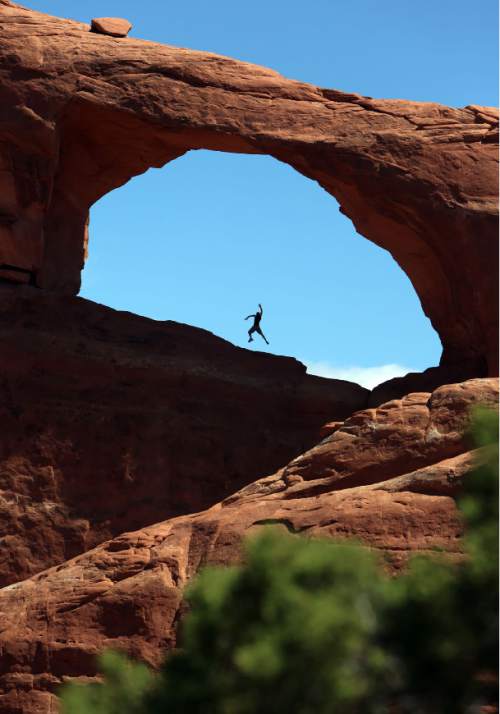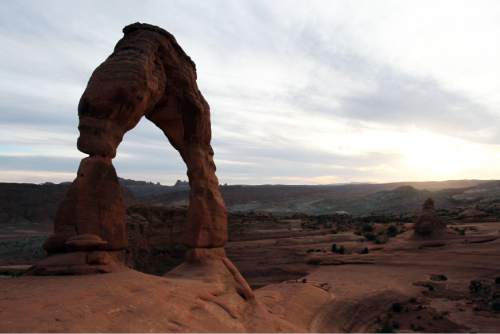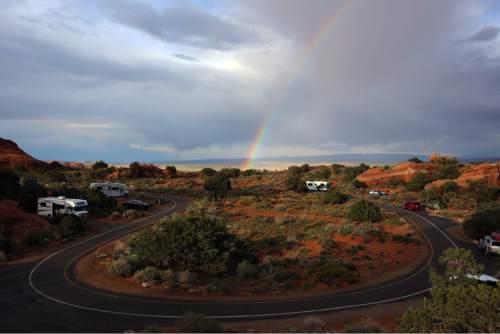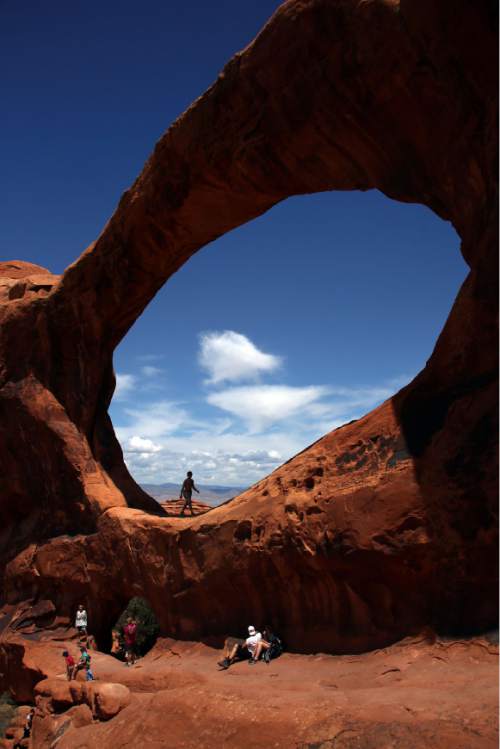This is an archived article that was published on sltrib.com in 2015, and information in the article may be outdated. It is provided only for personal research purposes and may not be reprinted.
There is not much water in Arches National Park.
What water is there is vitally important to the flora and fauna of the popular high-desert preserve.
State and federal officials gathered Friday in the park just north of Moab to acknowledge the role water plays with a contract meant to protect the precious resource.
The deal signed by Utah Gov. Gary Herbert and national-park and Interior Department leaders has been a long time coming, but finally defines water rights for the park and other water users in the area.
"It's our responsibility to ensure Utah's natural resources like water are protected, conserved and used wisely for the benefit of our state," said Mike Styler, executive director of the Utah Department of Natural Resources.
"This agreement allows us to continue to meet the needs of existing water users in the basin, while also meeting the needs of Arches National Park and its desire to protect the park's streams and springs."
The accord recognizes and reserves 120 acre-feet of water pulled from wells to serve campers at the Devils Garden Campground, people at the park's visitor center and employees living near the park entrance.
The contract also creates a protection zone around the park to guard "the flow of perennial, intermittent and ephemeral streams, seeps, springs and other naturally occurring water within the park, whose source is surface water or groundwater from the Entrada aquifer."
Part of the deal allows upstream "junior" water users in the basin, including ranchers and irrigators, to continue their water use.
A federal water right for the park was reserved when Arches was created in 1929. But no protections for water within and under the national park were carved out until now.
Arches Superintendent Kate Cannon said work on the agreement has been underway for at least 15 years. She complimented the state for the pact.
"Four very thorough hydrological studies by the state and federal government helped us determine how much water we need to maintain the park's natural features and the culinary supplies we rely on," Cannon said. "This is another great accomplishment by the [Utah Division of Water Rights]. I'm not sure any other state has this kind of success and determination."
State officials already have reached federal water agreements with Cedar Breaks National Monument, Golden Spike National Historic Site, Hovenweep National Monument, Natural Bridges National Monument, Rainbow Bridge National Monument, Timpanogos Cave National Monument, Zion National Park and the Shivwits Tribe.
Water agreements have yet to be reached for Canyonlands and Capitol Reef.
"Today's agreement between the state and federal government once again shows our ability to collaborate and solve complex challenges when we work together," Herbert said. "These agreements don't happen overnight.
They take time and a commitment from everyone involved. But we came out of this process with a fair and equitable agreement that benefits Arches and the state."
The agreement comes on the heels of a recently released audit of the Division of Water Resources that criticized water-use data collected by the state as inaccurate and incomplete.
Twitter: @BrettPrettyman











